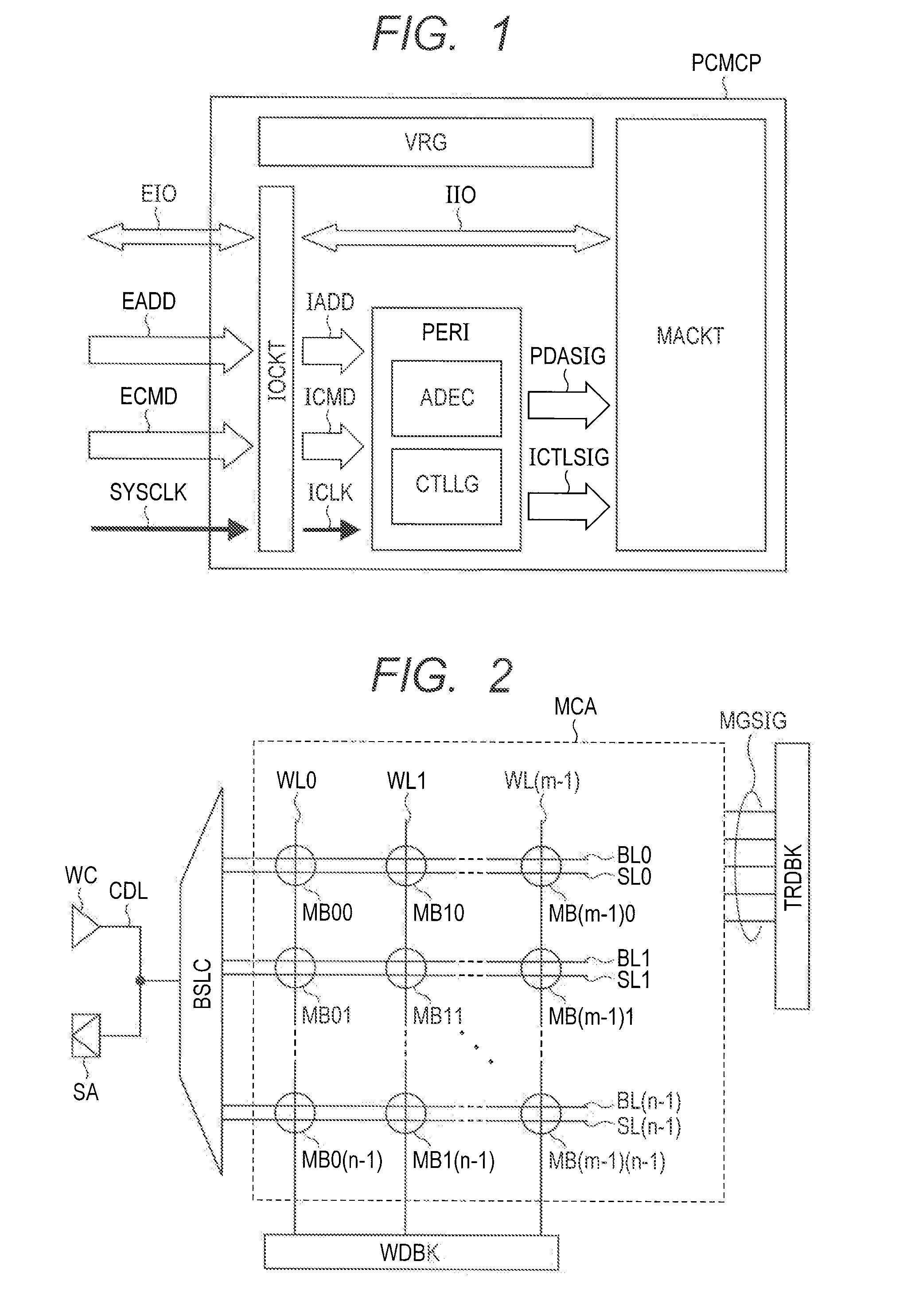Semiconductor storage device
a technology of semiconductor devices and storage devices, applied in semiconductor devices, digital storage, instruments, etc., can solve the problems of erroneous write operation, need a long current application time, and inability to store information in unselected cells, etc., to achieve high integration, high reliability, and large capacity
- Summary
- Abstract
- Description
- Claims
- Application Information
AI Technical Summary
Benefits of technology
Problems solved by technology
Method used
Image
Examples
first embodiment
[0087]As described above, the semiconductor storage device according to the first embodiment comprises a set-dedicated memory cell MC0 in a memory block MB. By utilizing Joule heat generated by applying the set pulse current SETPLS to the memory cell MC0, same information is written concurrently into memory cells MC1 to MC4 in a same memory block MB, and then the reset operation is performed with respect to memory cells out of memory cells MC1 to MC4 in which the information should not be stored. Since reset operation time is shorter than set operation time, diffusion to peripheral memory cells of Joule heat generated by applying the reset pulse current is suppressed, whereby the information [0] can be written selectively.
[0088]That is, the semiconductor storage device according to the first embodiment is capable of preventing erroneous writing even when intervals among memory cells are reduced to an extent that Joule heat generated by applying the set pulse current SETPLS to the me...
second embodiment
[0107]As described above, the semiconductor storage device according to the second embodiment does not include a set-dedicated memory cell and writes information concurrently to all memory cells in a memory block by performing the set operation using any one of memory cells MC1 to MC4. Thereafter, the reset pulse current RSTPLS is applied to a memory cell, out of memory cells MC1 to MC4, in which the bit [0] should be stored. In such a manner, same operations as the first embodiment can be achieved.
[0108]Further, the semiconductor storage device according to the second embodiment selects a memory cell for the set operation according to the number of times of erasing and the number of times of recording stored in the table EPCTBL. In such a manner, concentrated application of the set pulse current SETPLS to a specific memory cell can be prevented. That is, deterioration of electric properties of memory cells to which the set pulse current SETPLS is applied can be suppressed.
[0109]Fur...
third embodiment
[0172]As described above, the semiconductor storage device according to the third embodiment has narrowed intervals among memory cells in the interconnect hole due to a half reduction of the effective memory area compared with a memory cell according to the first embodiment. However, after a pair of cell chains is erased (here, the set operation) concurrently by using memory cells for information storage, sequential reset operations are performed with respect to memory cells for information storage, whereby information can be recorded by selectively applying the current to memory cells in the memory block MB10.
[0173]The polysilicon diode PD according to the third embodiment may be provided instead of the block select transistor BTR according to the first and second embodiments. By using the polysilicon diode PD, the effective area can be reduced than the block select transistor BTR.
PUM
 Login to View More
Login to View More Abstract
Description
Claims
Application Information
 Login to View More
Login to View More - R&D
- Intellectual Property
- Life Sciences
- Materials
- Tech Scout
- Unparalleled Data Quality
- Higher Quality Content
- 60% Fewer Hallucinations
Browse by: Latest US Patents, China's latest patents, Technical Efficacy Thesaurus, Application Domain, Technology Topic, Popular Technical Reports.
© 2025 PatSnap. All rights reserved.Legal|Privacy policy|Modern Slavery Act Transparency Statement|Sitemap|About US| Contact US: help@patsnap.com



